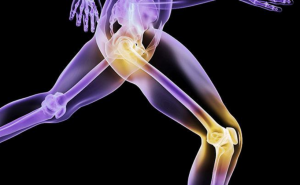Best Joints Ever?

An aging population will always have needs that are specialized and unique, and there is every indication that new technologies will be developed to meet those needs in innovative new ways. Baby Boomers were the largest population bulge up until 2016, and now their numbers are starting to dwindle, being slowly eclipsed by Millennials. However, no matter which generation predominates, people will always be getting to that stage in life where medical assistance and intervention become a critical factor in maintaining quality of life. In the USA, people over the age of 65 are forecasted to be 20% of the population by 2050, up from 15% today.
One of the frequent occurrences with the elderly is the deterioration and failure of important body joints, like hips, knees, shoulders, elbows, wrists, and ankles. Hip and knee joint replacements are very common today, using manufactured replacement parts, but these parts can wear out long before the patient does. New technologies are being developed to improve the longevity of such parts, and the ideas include some interesting uses of technology already in place, such as 3D printers. The industry calls this new kind of fabrication “additive manufacturing” facilitating the production of medical implants that perform better inside humans than anything built previously.
Additive Manufacturing is a new way to build medical implants, and replaces the traditional methods of molding or chiseling parts from solid blocks of metal, like titanium. Using a 3D printer, metal parts can be built layer by layer, with each layer being as thin as 1/50th of a millimeter. This allows the part to be designed and built with very intricate internal structures, and when these internal structures are very similar to human bone structure, the implant can bond more easily to the patient’s bones. These structured metal implants become securely fixed in place, fusing with real bone, which is known as “biological fixation”. Currently, medical implants are often fused to bones with medical-grade cement and that cement can break down over time and cause a loosening of the part. This will lead to another surgery to replace the replacement part that has come loose. Better fixation with better materials design should dramatically reduce this situation from occurring.
There is a market for medical implants beyond hips and knees, especially if the parts can be precisely built for individuals and be fixed firmly in place with biological fixation. For instance, spinal fusion implants will have to be individually tailored and not move around at all, as they will be very close to the spinal cord. Precision and improved fixation will be the watchwords for these new technology medical implants, and there are several companies actively exploring this new technology.
Trend Disruptors has been monitoring these developments and just sent out a new recommendation to subscribers of Trend Disruptors Premium. If you would like subscribe to Trend Disruptors Premium, we are offering a special discount of $200 off the regular price, so you pay only $399.95.
